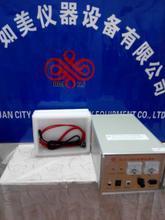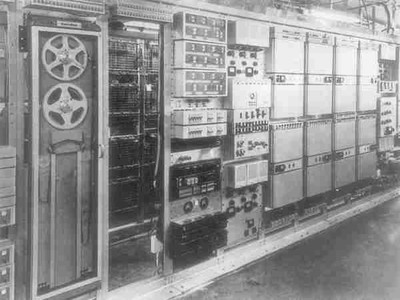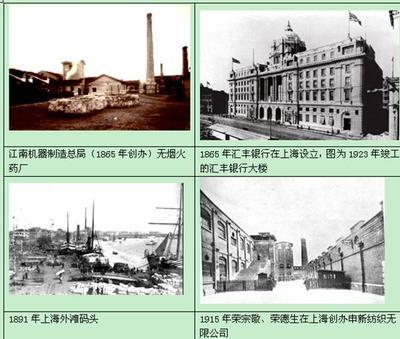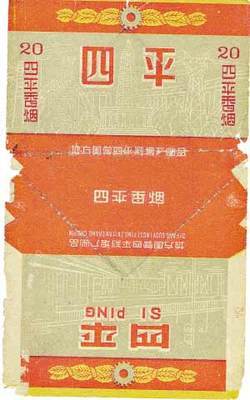【本文摘自《电晕处理综述》(CoronaTreatment:AnOverview),DavidA.Markgraf,SeniorVicePresident,EnerconIndustriesCorporation】
HistoryofDevelopment
电晕处理技术的发展历史
Theconfigurationoftheelectrodehastakenmanyforms.Oneoftheearliestformswasasimplewirestretchedparalleltothegroundrollwhichwascoveredbyadielectricsuchaspolyesterwrapping.Thewireelectrode(seeFigure10)accomplisheditspurpose,butprovidedsuchanarrowcoronathatthedwelltime,thetimewhichthesubstrateactuallyspentinthepresenceofcorona,wasexceedinglyshort.Inaddition,thepowerlevelthatcouldbeappliedwasextremelylimitedbythecrosssectioncapacityofthewireanditsabilitytodissipateheatgeneratedduringtreatment.Ozone,whichisalwaysproducedinthecorona-filledairgap,hadtoberemovedfromtheworkenvironment.
(电晕处理机的)电极的构造有多种形式。其中最早期的一种形式是一根被张紧的电线与底辊相平行配置的形式,底辊上覆盖着绝缘物,例如聚酯。这种线型电极(参见图10)能够实现电晕处理的目的,但是它所提供的电火花过于狭窄,以至于处理时间-被处理的的基材在电火花中停留的时间-非常短暂。另外,由于线型电极的截面容量(crosssectioncapacity)较小,驱散在电晕处理过程中所产生的热量的能力较差,所以,该种电极所能输出的功率级是非常有限的。而且,必须将充斥在生产环境中的臭氧不断地排除出去,这些臭氧是在线型电极与底辊间的气隙间的电火花中不断地生成的。
Anotherearlyformofelectrodewasathreadedrodwhichprovidedmoredwelltime,butbecauseoftheunevennessoftheelectrodesurface,ithadatendencytocreateuneventreatmentacrossthetransverseofthesubstrate.Coronahasatendencytobemoreintensiveatsharppointsintheelectrode(seeFigure11),causinghighertreatmentlevelwherethethreadedportionisclosertothesubstrate.
另一个早期的电极型式是螺线杆(threadedrod),它能够提供较长的处理时间(dwelltime),但是,由于该电极的表面是不光滑的,所以,它有可能在基材的横截面上造成不均匀的处理效果。由于电火花往往集中在电极的尖端处(参见图11),因此,会在螺线杆与基材更接近的部位产生较高的处理水平(程度)。
Straightmetalbarelectrodeswerealsoused,andarestillbeingusedtoday.Thebarproduceseventreatmentacrossthesubstratebutrequiresanewelectrodetobecuttolengthtomatchthewebwidtheachtimethewebischanged.Thisisinconvenientfortheoperatorandrequiresastoragesystemforvariouslengthsofelectrode(seeFigure12).
直线型金属棒电极(Straightmetalbarelectrodes)也被使用过,而且今天仍然在应用中。该电极能够在基材的横断面上产生均匀的处理效果,但是,当基材的宽度发生变化时,就需要更换一根新的与基材宽度相匹配的电极。这对于操作者来说是不方便的,而且还需要事先储备不同长度的多个电极(参见图12)。
Inordertoovercometheneedtocutelectrodestolength,barelectrodeswerecutinsegmentsandmountedonarodsothatwhenwebwidthchanged,segmentscouldbemovedawayfromthegroundroll,thusmatchingtheelectrodelengthtothewebwidth(seeFigure13).Manysuchelectrodesarebeingusedtoday.Thisconfigurationofelectrodeshasseveraladvantagesanddisadvantages.
为了解决这一问题,直线型的金属棒电极被切割成许多小段,然后安装在一根金属杆上,这样一来,当基材的宽度变化时,其中的一些电极可以被从底辊表面移除,从而使电极的宽度与基材宽度相匹配(参见图13)。这种电极今天仍在被广泛使用。这种形式的电极有一些优点,也有一些缺点。
Whenthesegmentedelectrodewasmounteddirectlyabovethegroundroll,thesegmentswouldswingoutofthewaywhenawrinkleorsplicegreaterthantheairgapwouldpassoverthegroundrollanddropbackintoplacewhenthewrinkleorsplicehadpassed.Anotheradvantageofthesegmentedelectrodeistheabilitytoraisecentersegmentsandallowstriptreating.Inearlierelectrodes,athicksplicestrikingtheelectrodecouldcauseittobedamaged.Acorrespondingdisadvantageisthatozoneproducedinthecoronasoonformedaluminumoxidedepositsbetweenthesegments,thuscausingthemtoremaininthenontreatposition.Thisproblemcanbeovercometosomeextentbyhardcoatingoranodizingthesegments.Afurtherimprovementistheuseofstainlesssteelastheelectrodematerial.Thishasvirtuallyeliminatedstickingofsegmentsorwarpageoftheelectrode.
当这种分段电极(segmentedelectrode)安装在底辊上后,如果基材上有大于气隙的皱褶或接头通过底辊时,分段电极就会摆离(swingout)底辊,而当皱褶或接头已经通过底辊后,分段电极还会返回其原始位置。分段电极的另一个优点是可以将中间的电极升起,以便进行带状处理。在早期的分段电极中,过厚的接头有可能会造成电极的损坏。相应的缺点是:在电火花中产生的臭氧会生成氧化铝并沉积在分段电极间,导致分段电极不能返回其初始位置。这个问题可通过对分段电极进行表面硬化处理或阳极化处理得到某种程度的缓解。进一步的解决方法是使用不锈钢作为电极的加工材料。该方法事实上消除了分段电极间的粘连或电极的热变形的问题。
Afinaldrawbacktothisconfigurationisthepossibilityofuneventreatmentacrosstheweb.
这种电极型式的最大缺点是在基材的横断面上的处理程度的不均匀。
Asubstratehavingtreatmentthatisnotuniformacrossthewebmaycausebondingorheat-sealproblemsinprinting,extrusioncoating,coating,andlaminating.Uneventreatmenthasbeengreatlyalleviatedbybiascuttingofsegmentstopreventstriptreatingbetweensegments.
已经过电晕处理、但在横断面上处理程度不均匀的基材可能会在印刷、挤出涂布、表面涂层处理和复合加工中导致附着力、粘接强度和热封问题。通过对分段电极进行斜切处理(biascutting)以防止电极间的带状处理,该问题已被极大地缓解了。
Thecoveredrollsystemusingadielectriccoveredrollwitheitherabarorsegmentedelectrodealso
presentedasizeproblem.Inordertoproperlytreatagivenwebwidthanddissipateheatgeneratedduringthetreatingprocess,thecoatedrolldiametermustincreasedirectlywiththetotalappliedpower.Heatbuilduponcoatedrollsisverydestructiveandcanonlybemitigatedbyincreasingtherolldiametertoallowaperiodofcoolingbetweencyclicpositioningundertheelectrode.Inaddition,toprovideozoneremovalandoperatorsafety,thestationasawholemustalsoincreaseinsizeastherolldiameterincreases.Figure14indicatesrolldiameterrequirementsasafunctionofappliedpower(kW).
包覆辊系统(thecoveredrollsystem,绝缘体包覆的底辊,不管配备的是棒状电极还是分段电极)都存在着尺寸问题。为了适当地处理给定宽度的基材,并驱散在处理过程中产生的热量,随着施加的能量的提高,包覆辊的直径必须增大。在包覆辊上的热量具有很大的破坏性,只能通过增加包覆辊的直径使之在周期性的处理过程中有一个冷却阶段才能得以缓解。另外,为了移除臭氧和操作者的安全,伴随着底辊直径的增加,电晕处理机的整体尺寸也需要增加。图14标示了包覆辊直径与电晕处理机功率(kW)的关系。
Anothermethodwhichhasbeenattemptedwithoutmuchsuccessistouseseveralsetsofsegmentedelectrodeswhicharestaggeredsothateachrowofsegmentscoverstheairgapfromthepreviousrow(seeFigure15).Thissolutionhasnotprovenreliable.Recenttestsindicatethatsignificantuneventreatmentstilloccurs.
Twoearlyelectrodeswhichwereattemptedinvolvedaglasstubewithametalrodinsertandaglasstubefilledwithsteelwool(seeFigure16).Thiswasanentirelynewconceptbecause,forthefirsttime,thedielectriccoverwasremovedfromthegroundrollandplacedontheelectrode.Thisearlybare-rollconfigurationpromisedagreatmanyadvantagesbutwassoonabandonedbecauseexpansionofthemetalrod,duetoarisingtemperature,broketheglasstube.Evenwhentheelectrodewasrotatedtospreadthecoronaovera360degreerevolution,neitheroverheatingnorbreakagewasprevented.
两个较早的不成功的电极系统,包括一个插入了金属棒的玻璃管和一个充填了钢丝棉的玻璃管(参见图16)。这在当时是一个全新的概念,因为它第一次从底辊上取消了绝缘覆盖物,并直接包覆在了电极上。这一较早的光辊(bare-roll)系统显示了许多的优点,但很快就被放弃了,因为随着温度的升高,金属棒膨胀,玻璃管就被胀破了!尽管曾将该玻璃电极旋转以分散电火花,但既不能防止过热也不能阻止玻璃管的破裂。
Anotherseriousconsiderationshouldbementionedhere.Noneofthemetalelectrode
covered-rollconfigurationsworkwhentreatingconductivesubstratessuchasfoilsormetallizedfilm,andaverycomplexformofelectrodewasrequired(seeFigure17).
这里应该强调一下另一个重要的方法。当需要处理导电性的基材,例如铝箔或镀铝薄膜,时,没有一个金属电极包覆辊系统是可用的。此时,需要一个非常复杂的电极形式(参见图17)。
Thisearlybare-rollsystemconsistedofametalgroundrollandaseriesofdielectriccovered electrode
rollsthatweredriven.Thisisaveryexpensive,cumbersomemethodoftreatingconductivesubstrates,butitwastheonlymethodavailable这种早期的光辊系统(bare-rollsystem)由一个金属底辊和一组可主动旋转的绝缘体覆盖电极辊所组成。这是一个非常昂贵、非常复杂的处理导电性基材的方法,但在当时又是唯一可行的方法。
In1980,anewconfigurationofelectrodecapableofoperatingonabarerollwasdevelopedwhichsurmountedthebasicproblemsthatwereexperienceduptothatpoint.Thiselectrodeachievedthefollowingoperationalgoals(alsoseeFigure18):
1980年,一个新的能够在光辊上操作的电极系统诞生了,它解决了在此之前所遇到的众多基础问题。这个电极达到了下列的操作目标(参见图18)。
1.Evencoronatreatmentacrossthetransverseofthesubstrate.
在基材的横断面上的均匀的电晕处理效果。
2.Eliminatingtheneedtoadjusttheelectrodetowebwidth.
去除了调整电极长度以适应基材宽度的需求。
3.Eliminatingthedielectricrollcoveringwhichrequiredfrequentreplacementandentailsaninventoryofsparerollsaswellasconsiderableproductionlossduringreplacementofaburned-outroll.
取消了绝缘辊包覆物,该包覆物需要不时地更换、需要有备件库存、以及在更新过程中难以估量的生产损失。
4.Allowcoronatreatmentofbothconductiveandnonconductivewebsusingasimplesystemwithoutdriventreaterrolls.Further,evenperforatedwebscanbetreatedwiththistypeofelectrode.
可以使用这个没有主动处理辊的简单系统处理导电性基材和绝缘性基材。甚至网孔状的基材也可以在这种类型的电极上进行处理。
5.Allowsplicestoflowthroughthecoronatreatingstationwithoutstrikingtheelectrodedespitetheclosepositionoftheelectroderelativetothetreaterroll.
Inadditiontoachievingtheseoperationalgoals,thisnewelectrodeconfigurationalsoeliminatedtheneedforaclosedcabinettoremoveozone.Conventionalcoronatreatingsystemsrequireaclosedcabinetnotonlytoremoveozoneintheoperatorarea,buttopreventelectricalshocktooperatorswhoarerequiredtoworkincloseproximityofthecoronatreatingstation.Thisrecentlypatentedelectrodeassemblymeetsalltheoperationalandsafetyrequirementsofextrudersandconverters(seeFigure19).
除了达到这些操作目标之外,这种新的电极系统也取消了用以去除臭氧的封闭式机壳。传统的电晕处理系统需要一个封闭式的机壳,不仅是为了去除臭氧,也是为了防止对操作者发生电击,因为操作者有时需要在接近电晕处理机的位置上进行工作。

Substratescanevenbeselectivelytreatedleavingspecificareasuntreatedasinthepreviouslymentionedheat-sealapplications(seeFigure20).Theconceptthatmadethiselectrodepossiblewastheuseofarectangularceramictubefilledwithirregularlyshapedaluminumalloygranules.
基材甚至可以被有选择性地进行处理,以在基材上留下特定的未处理区域,就象前面论述过的热封应用中(参见图20)。使得这种电极成为可能的理念是:在方形的陶瓷管中填充入形态不规则的铝合金颗粒。
Whenthesegranulesheatup,theydonotbreaktheceramictubesincethereissufficientroomfortheirexpansion.
当这些铝合金颗粒物被加热后,它们不会使陶瓷管破裂,因为在管内有足够空间供其膨胀。
Thiselectrodeisacceptedasthelateststate-of-the-artinEuropeaswellastheUnitedStates.
这种电极在欧美被公认为是最完美的。
Hundredsofproductionlinesusethistypeofsystem,whichproveditsabilitytotreattohighlevelswhileprovidinglong-termreliability.
成百上千的生产线使用了这一系统,它证实了其高水平的处理能力以及长期运行的可靠性。
Whyceramic?Itisamaterialwhichcombinestheattributesofdielectricstrengthwithahighelectricalpowerpersquareinchtoenablehightreatmentlevels.Aceramicwasdevelopedwhichallowedtwiceasmuchpowerpersquareinchtobeappliedtoeachelectrode.Theceramicelectrodeachievedthishighertreatmentlevelbecauseofitshigherdielectricconstantandlowerelectricalreactance.Thesefactorsallowtheceramicelectrodetoprovideahighertreatmentlevelforagivenappliedvoltage.Furthermore,sinceceramicislesssensitivetohighoperatingtemperatures,higherpowerlevelscanbeappliedandmaintainedtoprovideconsistentlyhigherlevelsoftreatmentperelectrode.为什么是陶瓷?因为它是这样一种材料:既有一定的绝缘强度的属性,又有较高的单位面积电功率输出能力,使达到较高的电晕处理水平在技术上成为可能。陶瓷材料现已发展到这样的水平:使每支陶瓷电极每平方英寸可以输出的电能两倍于以前的电极材料。这种陶瓷材料能够达到这样高的处理水平是因为它具有较高的绝缘常数和较低的电阻。这些因素使得陶瓷电极能够在给定的电压条件下达到较高的处理水平。与此同时,陶瓷对高的操作温度较不敏感,因此,较高的功率水平才能够被输出,并且保持每支电极常态化的较高的处理水平。
Anyelectrode,beitmetalorceramic,hasalimitofeffectiveoutputbaseduponthetotalbarareaoftheelectrode.Inthepast,barareaofametalelectrodewasincreasedbycuttingthefaceclosesttothegroundrollinaconcentriccurvetofollowtherollface(seeFigure21).
任何一种电极,不管是金属的或陶瓷的,基于它的总的电极表面积,都会有一个有效输出功率的限值。以前,增加金属电极棒的面积的方法是将电极朝向底辊的面加工成与底辊相同的同心圆(参见图21)。
Asmoreandmorepowerisappliedtoagivenelectrode,anultimatelimitisreachedatwhichfurtherpowerappliediswasted.Therefore,aspowerdensityrequirementsincreased,coronatreatingsystemsrequiredadditionalelectrodes.Thepowercapacityoftheceramicelectrodereducesthenumberofelectrodesbyone-half,thusproducingasmallerandlessexpensivestation(seeFigure22).
随着给每一支电极施加的电能量的不断增加,输出功率的极限就达到了,此时再想增加输出电能的努力都是无用的。因此,随着功率密度需求的增加,电晕处理系统就需要增加电极数量。新的陶瓷电极功率输出能力将电极的数量减少了一半,这样就能生产出体积较小的和较便宜的电晕处理机了(参见图22)。
Recentadvancesindielectricrollcoveringsandpowersupplydesignhavemadehybridsystemspossiblethatgreatlyenhancetheleveloftreatmentondifficulttotreatsubstrates.
近期在绝缘辊包覆材料和电源设计方面的进步使得随之而来的综合性电晕处理系统能够极大地强化在难处理基材上的处理水平。
Ceramicelectrodeswithtightlycontrolledwattdensityandfrequencycanbeoperatedoveratreaterrollcoatedwithaspecialceramic(seeFigure23).Theresultisanimprovedleveloftreatmentondifficulttotreatsubstratessuchascastfilm,polypropylenewithhighlevelsofslipadditives,etc.
具有严格控制的(tightlycontrolled)功率密度和频率的陶瓷电极可以应用在有特殊陶瓷涂层的处理底辊上(参见图23)。其结果是在诸如流涎膜、高爽滑剂含量的聚乙烯膜等难处理基材上实现了较好的处理水平。
Inbare-rolland“H”systemtreaterstations,ceramicelectrodesareattachedintheassemblytoallowremovalandreplacementinlessthan10minutes.Thischangeovertimeiscriticalwhenproductionlossandcostduetodowntimecanbemeasuredinhundredsorthousandsofdollarsperhour.
在光辊(bare-roll)和如图23所示的“H”系统中,陶瓷电极的取出与更换可在10分钟内完成。在停机损失或费用以每小时数百或数千美元计算的企业中,这么短的更换周期具有决定性的意义。
Coronatreatingelectrodeshavecomealongway—fromwire,tosegmentedmetal,tospeciallyformulatedceramic.Eachtimeadvancementsaremade,itwouldbewisetoreviewwhatconstitutestheidealelectrode.Somecharacteristicsaredescribedhere:
电晕处理电极已经走过了漫长的路程,经历了线型电极、分段电极、直到特殊的陶瓷电极。每一次取得进步时,回顾一下什么才是理想的电极是一件很有意义的事情。以下陈述了一些特征。
1.Theelectrodemustprovideacontrolledlevelofeventreatmentacrosstheweb.
电晕处理电极必须能提供可控的在基材横断面上均匀处理的能力。
2.Theelectrodeshouldprovidetreatmenttobothconductiveornonconductivewebs.
Figure22.CeramicElectrode.
电晕处理电极应能够处理导电性和绝缘性的基材(图22,陶瓷电极)。
3.Theelectrodemustallowasplicetoflowthroughthetreaterstationwithoutdamagetotheelectrodeorstation.
电晕处理电极的设计应使得接头经过处理机时不会对电极或处理机造成损害。
4.Theelectrodeshouldprovidesufficientbarareaorpowercapacitytominimizethenumberofelectrodes.
电晕处理电极应具有足够的表面积或功率输出能力以最大限度地减少电极的数量。
5.Theelectrodemusthavethephysicalandchemicalstrengthtosurviveanindustrialenvironment.
电晕处理电极必须具有一定的物理与化学强度以适应工业化的生产环境。
6.Theelectrodeshouldbeeasilyremovedandreplacedtominimizedowntime.
电晕处理电极应当可以方便地摘除或更换,以最大限度地缩短停机时间。
7.Theelectrodeshouldprovideoperatorsafetywithoutanenclosedcabinetwhichinhibitsthreadingtheweb.
电晕处理电极应当给操作者以安全性的保证且不需要封闭的机壳,因为机壳会妨碍操作者穿料的操作。
8.Amethodofstriptreatingshouldbeavailableincaseswhereheat-sealareasarerequired.
如果需要有热封面积时,带状处理的方法应当是允许的。
9.Aprovisionforpurgingshouldbeavailablewhensystemsmustbeoperatedinhazardousatmospheres.
当电晕处理电极必须在有害的气氛(环境)中运行时,电极应当是可以被清洗的。
10.Airgaprequirementsshouldbesuchthattheoperatormayeasilymaintaintheproperairgapintheproductionenvironment.
电极的气隙应当是由操作者在生产环境下容易地进行维护与调整。
Newadvancementsshouldmeetthesecriteriabeforereplacingprovenmethods.Theceramictube-electrodefulfillsthesecriterianow,butintheinterestofprovidingtheindustrywiththelatesttechnologyavailable,thesearchforelectrodeconfigurationimprovementscontinues.
新的进展在取代老的已经过验证的方法之前必须满足上述的评判标准。陶瓷管电极现在均能满足这些条件,但是在向业界提供可用的最新技术的兴趣的驱使下,对电极配置进行改进的研究工作仍在继续。
 爱华网
爱华网



